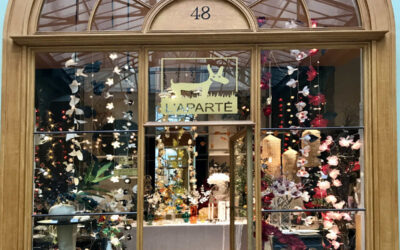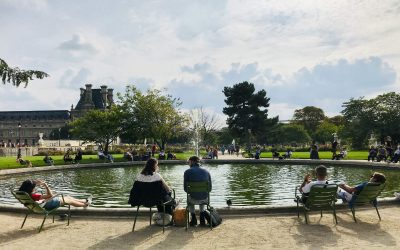In the east end of Paris stands a large central roundabout known as the Place de la Bastille. It is rather noisy and crowded, and even the locals will admit that this isn’t the most beautiful square in the City of Lights.
But this bustling corner of the city has had a front row to the history of Paris, and indeed that of France. This square has seen it all, from medieval fortress to royal prison, and finally, a symbol of revolution.
Not to mention all the French protests that still erupt there every now and again. So here are some curious and interesting facts about the Place de la Bastille in Paris. Allons-y!
- 1. The Fort Bastille Saint-Antoine was constructed in the 14th century.
- 2. It became a prison over time.
- 3. The Marquis de Sade was a prisoner here
- 4. The Revolution began here on July 14, 1789 because the fort held gunpowder.
- 5. Storming the Bastille on July 14, 1789.
- 6. The old Fort Bastille was dismantled.
- 7. The July Column (Colonne de Juillet) commemorates the two revolutions.
- 8. The 3 Glorious days and the 1830 Revolution.
- 9. The Génie de la Liberté (Spirit of Freedom) overlooks the Place.
- 10. The stones of Fort Bastille were used to construct the Pont de la Concorde.
- 11. Canal Saint Martin runs underneath the Bastille.
- 12. Opera Bastille stands in one corner of the Place.
- 13. There is a famous poem about Place de Bastille.
- 14. Bastille day is called "14 Juillet" in French.
- 15. The Metro under the Bastille has scenes from the Revolution under it.
- 16. It is at the corner of 3 different arrondissements.
1. The Fort Bastille Saint-Antoine was constructed in the 14th century.
The original old fort was built at Bastille between 1370 and 1383 during the reign of King Charles V to protect the east end of Paris along the Seine.
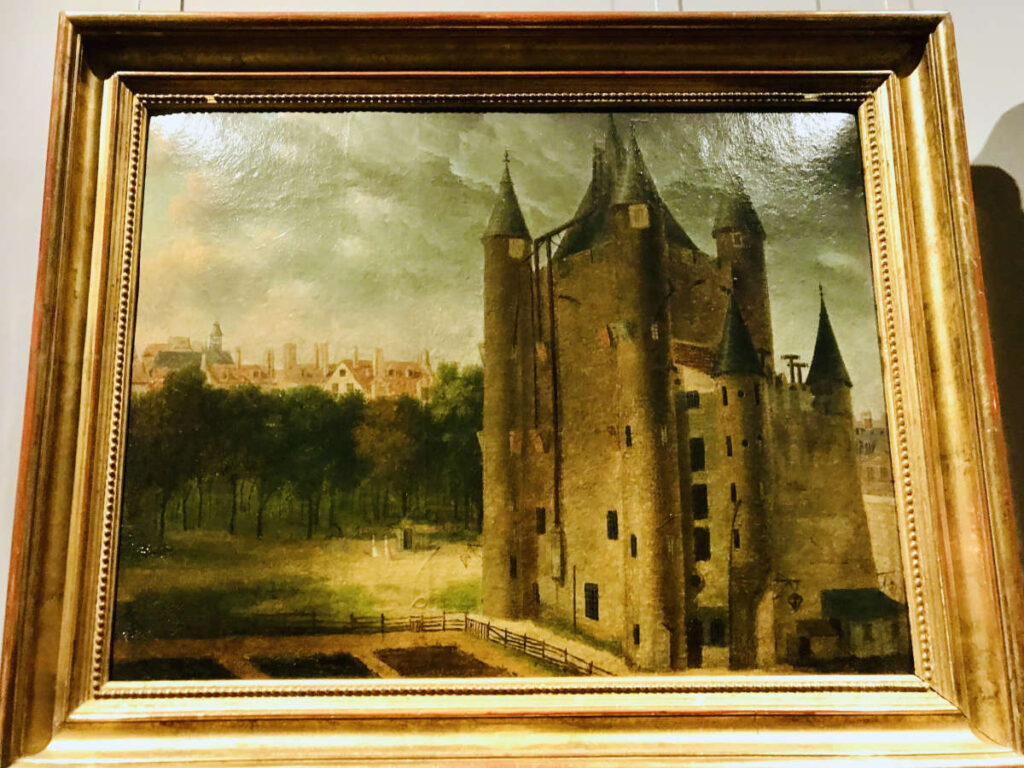
Around 2.5 miles (4 km) further along the river, stood the Palais du Louvre which had been constructed 2 centuries earlier.
In between the two castle forts stood the Marais and the producers’ market of Les Halles which was the biggest market in the center of the Paris, with traders coming by boat along the Seine to deliver their goods. (Today this market has been moved to Rungis, just outside Paris.)
The trade route was regularly a target for mercenaries, raiders, and other enemies of the King, including the English, Burgundians, and Vikings. The new Fort Bastille Saint-Antoine was built to protect the city’s commerce and food supply.
2. It became a prison over time.
This fortress originally had only two towers. Two others were quickly added, then around 1383, another four towers built, joined together with thick walls and surrounded by a ditch.
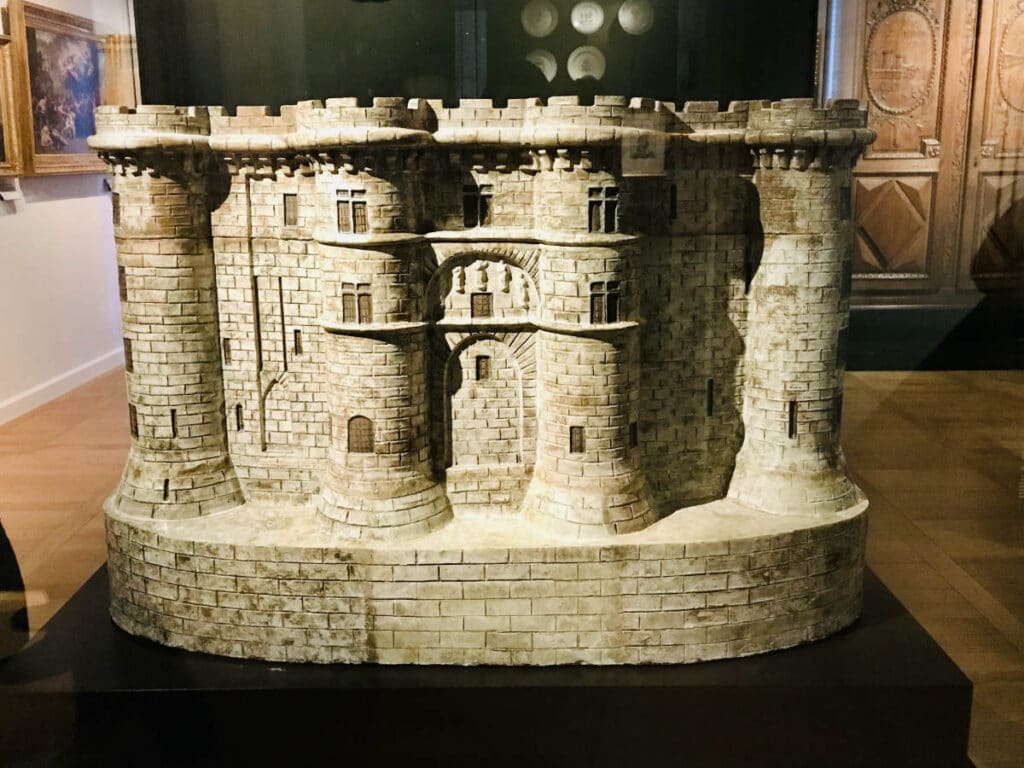
The result was a rather imposing building made of stone that was surrounded by guards armed to the hilt.
The fortress was declared a state prison in 1417, and its dungeons and cells continued to be used as a prison for important political prisoners until the revolution, including the “Man in the Iron Mask”.
3. The Marquis de Sade was a prisoner here
Among the famous prisoners at Fort Bastille Saint-Antoine was the French writer and philosopher Marquis de Sade.
With a vast number of short stories, novels and anonymous tracts about his “libertine habits in the bedroom”, the Marquis de Sade was considered a public menace.
By the time the revolution occurred, he had already been held there for over 10 years and a good majority of his published works were written in prison.
4. The Revolution began here on July 14, 1789 because the fort held gunpowder.
In July of 1789 there were only 7 prisoners there, including the Marquis de Sade. However, there was a more important reason that the Fort was attacked.
As the French peasants and revolutionaries were preparing to make their demands, they decided they needed weapons.
While they were able to get muskets by taking over the Hotel des Invalides in Paris, they also needed gunpowder. As it happened, the Fort at Bastille Saint-Antoine had stockpiles of it.
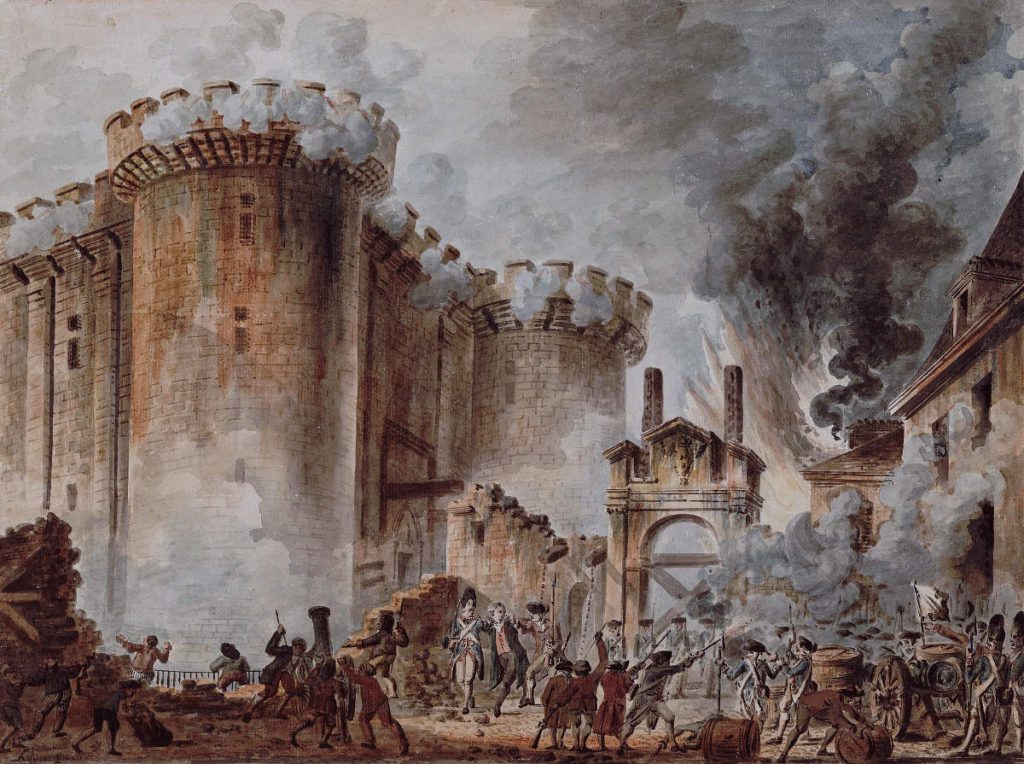
5. Storming the Bastille on July 14, 1789.
On July 14, 1789 the revolutionaries stormed into the Bastille, freeing all the prisoners and beheading the prison’s governor and stuck his head on a spike.
The revolution had begun and soon spread all across Paris and the rest of France.
6. The old Fort Bastille was dismantled.
Over the months that followed the Revolution in 1789, the Bastille was dismantled stone by stone, with pieces being sold as souvenirs up and down the country. The ancient fort soon turned into rubble, and for practical reasons, the prison was demolished.
7. The July Column (Colonne de Juillet) commemorates the two revolutions.
After the dismantlement of the Fort Bastille Saint-Antoine, there was a big debate of what to build there. It was a large central square and gathering place called the Place de la Bastille. Initial plans in the 1790s led to a large fountain.
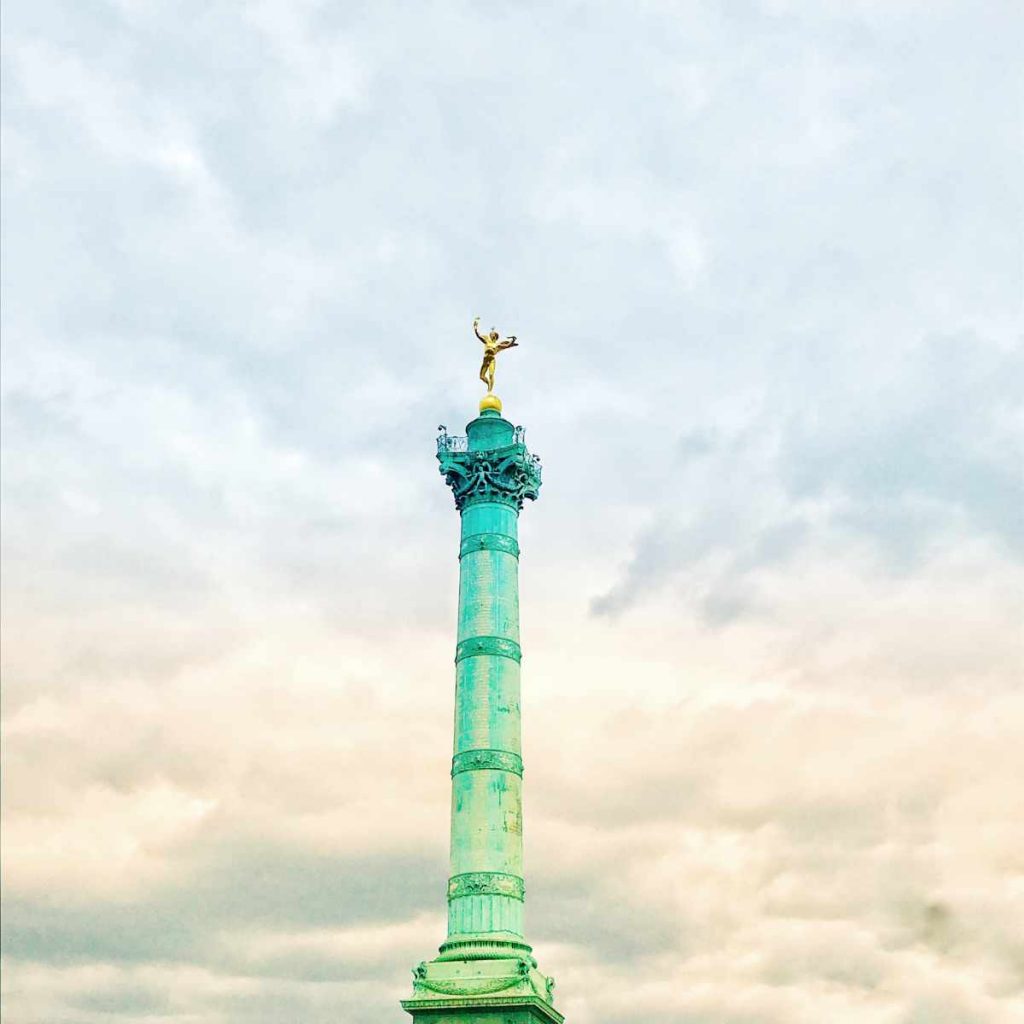
Napoleon Bonaparte then had plans for a monument in the shape of a large bronze elephant, but those plans never came to be after his downfall.
It would take a 2nd revolution for the Place de la Bastille to get its monument in the form of a tall pillar called the Colonne de Juillet (July Column) which was inaugurated in 1840.
8. The 3 Glorious days and the 1830 Revolution.
The Bastille had become an important symbol of the 1789 Revolution, and this symbolism was significant during another revolution in 1830.
Known as the July Revolution of 1830, it was a 3 day revolution in Paris where the restored Bourbon dynasty was overthrown and France (temporarily) had a constitutional monarchy.
It was to commemorate those Trois Glorieuses (jours) meaning “Three Glorious (Days)” that the July Column was initially built in Place de la Bastille.
Today, the 1830 revolution is not one that is that well-remembered as there were several more significant upheavals that occurred in the following years. Nonetheless, the memory of that revolution stands at the Bastille. You can read more about the history of France here.
9. The Génie de la Liberté (Spirit of Freedom) overlooks the Place.
The figure on top of the tall pillar is called the “Génie de la Liberté” (Spirit of Freedom). It is a gilded bronze sculpture made by Auguste Dumont in 1836.
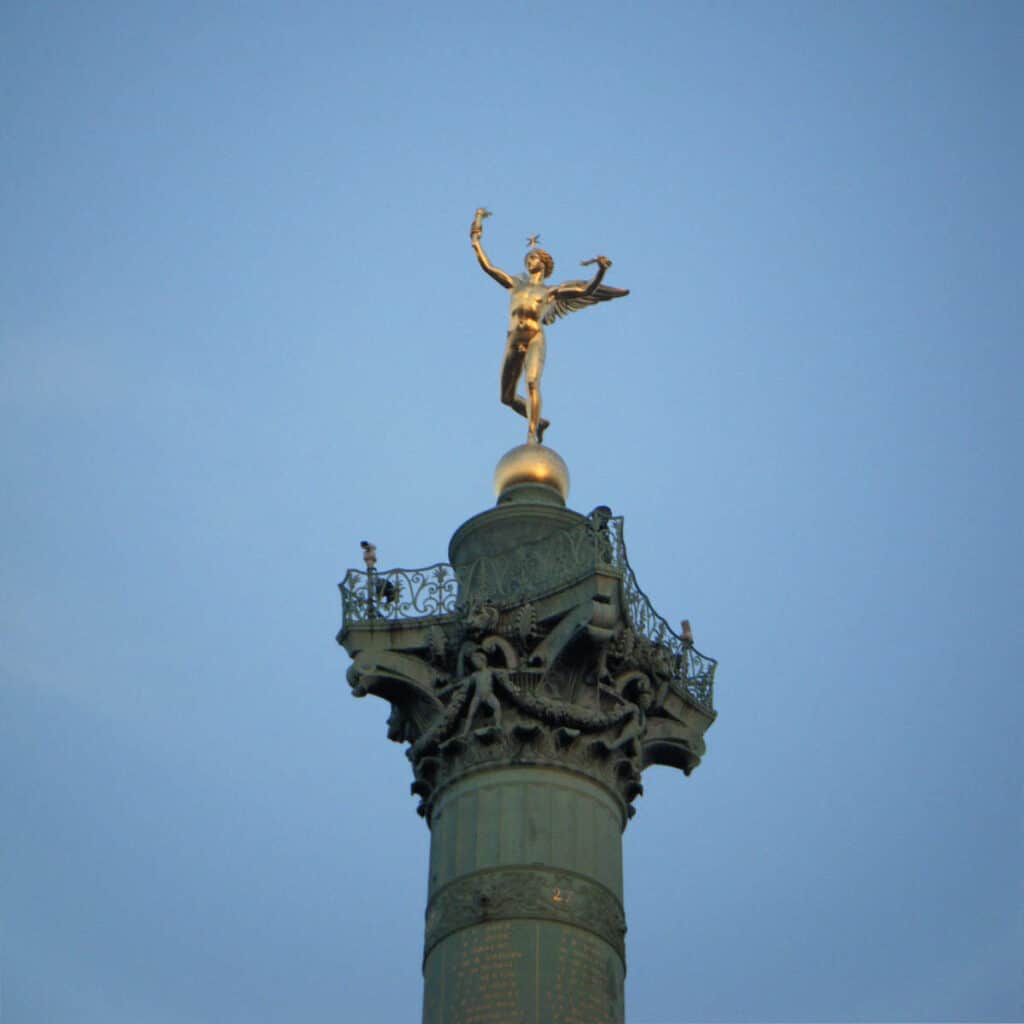
10. The stones of Fort Bastille were used to construct the Pont de la Concorde.
In a symbolic and yet practical gesture, the bridge in Paris known as the Pont de la Concorde was built using some of the stones from the castle at Bastille.
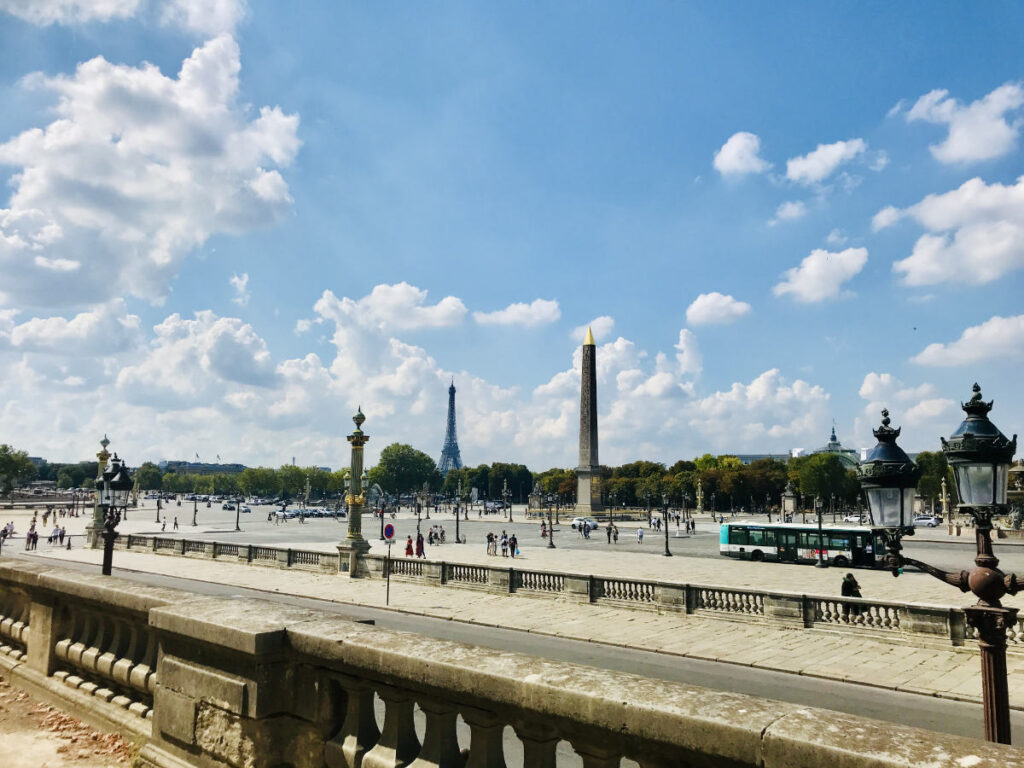
The bridge leads from the Place de la Concorde, where the King, Marie-Antoinette and other nobles were beheaded, across the other side of the Seine to the Assemblée Nationale, which is the French version of House of Representatives (or House of Commons).
11. Canal Saint Martin runs underneath the Bastille.
Most visitors to the Place de la Bastille don’t realize that there is actually a large canal running underneath it.

The Canal Saint Martin was authorized by Napoleon Bonaparte in 1802 to supply Paris with fresh water and prevent disease. By the time his nephew Emperor Napoleon III came to the throne in the 1850-1860s, his engineer Baron Haussmann had other ideas.
Haussmann was redesigning Paris, and decided to enclose the portion of the canal right before it feeds into the river Seine. Today the canal runs directly under the Place de la Bastille, and visitors can take a tour boat all along the canal until it reaches the Seine.
12. Opera Bastille stands in one corner of the Place.
On one corner of the Place de la Bastille stands the modern new opera house called Opera Bastille. Inaugurated in 1989 it is a concrete and glass building, very different from the historic Opera Garnier that sits in the 8th arrondissement.
Nonetheless, the two opera houses operate under one management called “Opera de Paris” with ballets, operas, and other productions taking place interchangeably in both locations.
13. There is a famous poem about Place de Bastille.
English poet Dante Gabriel Rossetti wrote one of the most famous poems about Paris, called Place de la Bastille during a visit there in 1849.
| Poem about Paris |
|---|
| How dear the sky has been above this place! Small treasures of this sky that we see here Seen weak through prison-bars from year to year; Eyed with a painful prayer upon God’s grace To save, and tears which stayed along the face Lifted at sunset. Yea, how passing dear Those nights when through the bars a wind left clear The heaven, and moonlight soothed the limpid space! |
| So was it, till one night the secret kept Safe in low vault and stealthy corridor Was blown abroad on gospel-tongues of flame. O ways of God, mysterious evermore! How many on this spot have cursed and wept That all might stand here now and own Thy Name. |
14. Bastille day is called “14 Juillet” in French.
Today “14 Juillet” is an annual public holiday in France, a bit like Independence Day is in the United States. Anglophones may call it “Bastille Day“, but the French actually just refer to it as 14 Juillet or fête nationale.
15. The Metro under the Bastille has scenes from the Revolution under it.
The prison fortress at Place de la Bastille may no longer be standing but the metro station Bastille honors that seismic event with tile murals showing the Parisian revolt.

The Bastille station is rather large, so if you are looking for it, it is on the platform of Metro Line 1.
16. It is at the corner of 3 different arrondissements.
There are several arrondissements that can claim the Place de la Bastille. It is at the point where the 4th, 11th and 12th meet. Each has its own personality, so explore them all if you get a chance!

If you enjoyed that article, you may like to read more facts about Paris. A bientôt!

